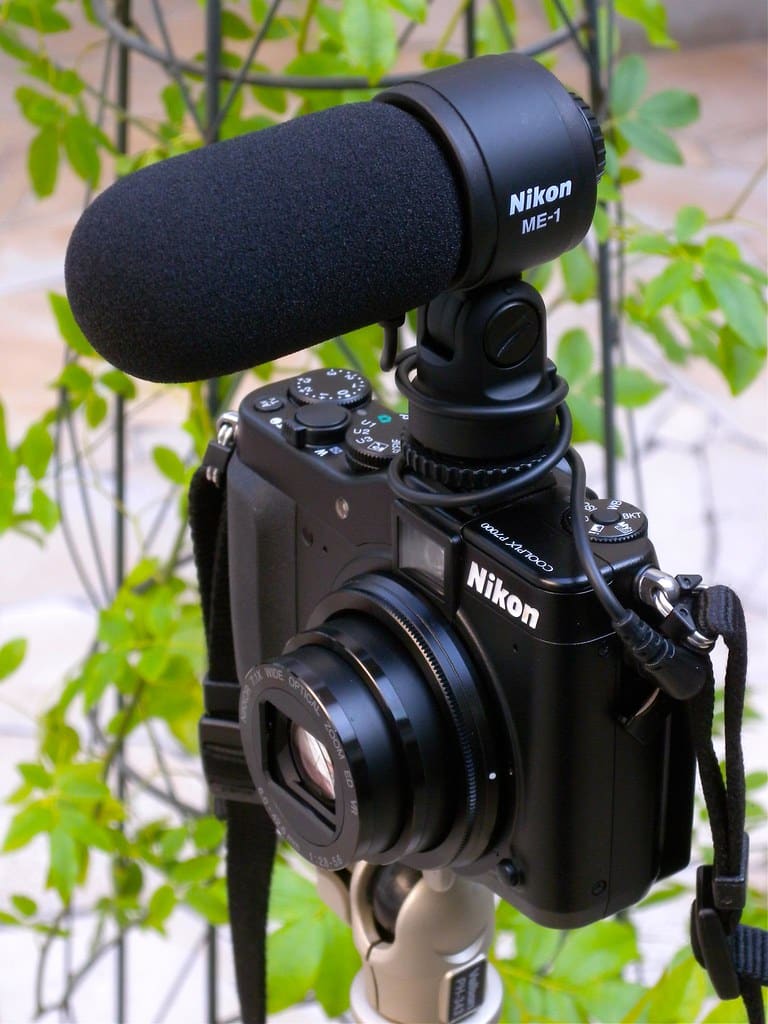Key Takeaways
-
Choosing the right microphone is essential for capturing the nuanced sounds of nature.
-
Omnidirectional mics are great for immersive soundscapes, while shotgun mics focus on specific sounds.
-
Understanding your environment and the behavior of wildlife enhances recording quality.
-
Proper positioning and protection of mics against elements like wind are crucial.
-
Field recorders, headphones, and portable power sources are indispensable tools for nature recording.

Discovering Your Sonic Subject in Nature
When you’re out in the wild, eager to capture the symphony of nature, the first step is to identify your ‘sonic subject’. This could be the rustling leaves, a babbling brook, or the calls of a nightingale. Each sound requires a different approach and understanding this will guide your microphone choice. For example, recording the delicate sound of insect wings demands a different setup than capturing the roar of a waterfall.
Understanding Acoustic Terrains: Where Sounds Emerges
Before placing your microphone, take a moment to really listen. Nature’s acoustics are unique; sound behaves differently in a dense forest compared to an open field. This ‘acoustic terrain’ determines how sound travels and fades. It’s vital to grasp this concept because it will affect where and how you set up your equipment. You’ll want to position your mic where it can best ‘catch’ the sound waves you’re after, just like you’d angle a camera for the perfect shot.
The Role of Weather on Field Recording
Weather isn’t just small talk – it’s a major player in field recording. Wind can howl into your mics, rain can create a symphony or a cacophony, and temperature can affect your gear’s performance. So, check the forecast and plan accordingly. You might need windshields or choose a mic less sensitive to wind noise on gusty days.
The Essential Microphone Types for Capturing Nature’s Essence
Let’s dive into the heart of our quest: the microphones. Just like a painter has different brushes, a nature recordist has different mics. Each type has its strengths and best use scenarios. I’ll guide you through choosing the right ‘audio brush’ for your masterpiece.
Dynamic vs. Condenser Microphones: A Primer
Think of dynamic and condenser microphones as the tortoise and the hare. Dynamics are the tortoises: rugged, less sensitive, and great for loud sounds. They don’t need a power source, making them reliable companions in the wild. Condensers, on the other hand, are the hares: sensitive, detailed, and they capture a wider frequency range. They do need power, but they’re worth it for their audio fidelity – especially for quiet, nuanced nature sounds.
Omnidirectional Mics: Immersive Audio from Every Angle
Imagine you’re surrounded by a chorus of crickets on a summer evening. An omnidirectional microphone is what you’d use to capture that 360-degree soundscape. It picks up sound from all around, immersing the listener right there with you. But remember, it’s not selective, so it’ll catch everything – including noise you might not want.
-
Use when you want to capture the ambiance of a place.
-
Great for recording multiple sound sources at once.
-
Less wind-sensitive, which is a plus in outdoor environments.
Shotgun Mics: Narrowing the Focus on Distant Animal Calls
Now, if you’re trying to record the call of a specific bird in the canopy, you’d reach for a shotgun mic. Its narrow pickup pattern is like a sound sniper, zoning in on your target while rejecting side and rear noise. This focus makes it ideal for isolating sounds in a busy environment. Just be sure to aim it accurately – shotgun mics are directional and won’t forgive a miss.
For instance, when I was recording the elusive calls of the Bornean rainforest frogs, a shotgun mic was indispensable. It allowed me to hone in on their croaks amidst the dense chorus of the jungle.
Parabolic Reflectors: Amplifying Faint Wilderness Whispers
Imagine trying to capture the delicate rustling of a deer through the underbrush. This is where the parabolic reflector comes in handy. It works like a satellite dish for sound, focusing faint whispers from the wild directly to your mic. It’s especially useful for picking up bird songs from a distance. The reflector’s shape amplifies and directs the sound, giving you a clear and strong recording of those subtle, often missed audio gems.
Positioning Matters: Optimizing Microphone Placement in the Field
Once you’ve got the right mic, it’s all about placement. Positioning your mic properly can mean the difference between a recording filled with the vibrant life of the forest and one that’s just… well, flat. Let’s explore how to place your mics like a pro.
Closer Proximity for Intimacy: Achieving Detailed Animal Recordings
To capture the intimate details of an animal’s call, you need to get close – but not too close that you disturb them. For smaller creatures and insects, placing the mic within a few feet can make a world of difference. You’ll catch every nuance, from the delicate flutter of a butterfly’s wings to the soft footfalls of a foraging squirrel.
Height and Angle: How to Avoid Obstructions and Enhance Clarity
Height and angle are critical. You don’t want a branch or a leaf blocking your sound. Elevate the mic on a stand or hang it from a tree, angling it downwards to mimic how we naturally hear. This also helps avoid ground reflections that can muddy your recording.
Using Windshields and Blimps to Combat Nature’s Roar
Wind is the nemesis of clarity in outdoor recordings. A gust can ruin a perfect take. That’s why windshields and blimps are a must. They act like a buffer, reducing the roar to a whisper. For particularly windy days, consider using a Rycote blimp – it’s like a cozy winter coat for your mic, shielding it from the elements.
Technical Tweaks: Adjusting Settings for Natural Sound Capture
Even with the best mic and positioning, you’ll need to fine-tune your settings to match the environment. Here’s how to tweak your gear for the clearest, most natural sound.
Gain Control: Balancing the Input for a Clear Output
Gain is like the volume knob for your mic’s sensitivity. Too low, and you’ll miss the subtleties; too high, and you’ll get distortion. Adjust the gain so the loudest sound you expect to record peaks at around -12dB. This gives you headroom to avoid clipping, ensuring a clear, undistorted recording.
Low-Cut Filters: When to Minimize the Rumble
Low frequencies from wind or traffic can overwhelm your recording. Most mics and recorders have a low-cut filter to handle this. Engage it to cut out frequencies below a certain threshold, usually around 80Hz, and you’ll reduce that rumble, leaving you with the sounds you want to capture.
Stereo Techniques: Crafting a Three-Dimensional Soundscape
Recording in stereo can bring your soundscape to life, giving it depth and dimension. Techniques like X/Y, M/S, or ORTF not only capture the sound but the space it inhabits. Experiment with these techniques to find the one that best captures the essence of your location.
Beyond the Mic: Supporting Gear for Superior Sound Expeditions
Now that we’ve covered mics, let’s talk about the other gear you’ll need to support your wilderness audio adventures.
Field recorders, headphones, and portable power sources are the unsung heroes of field recording. They can make or break your expedition. Let’s ensure you’re well-equipped.
Field Recorders: Choosing a Reliable Partner for Your Mics
Your field recorder is like your trusty sidekick. It needs to be reliable, rugged, and ready for anything. Look for one with low self-noise, good preamps, and the ability to record in high-resolution formats. Brands like Zoom and Sound Devices offer models that are widely trusted in the field recording community.
Headphones: The Immediate Feedback for In-Situ Adjustments
Good headphones are your immediate feedback system. They let you monitor in real-time what you’re capturing. Closed-back headphones are preferred in the field to block out external noise, allowing you to focus on the recording. The Sony MDR-7506 is a classic choice that won’t let you down.
When choosing headphones, look for comfort, durability, and a flat frequency response for accurate sound reproduction.
-
Comfort is key for long recording sessions.
-
Durability ensures they can withstand the rigors of field work.
-
A flat frequency response gives you the truest sense of what you’re recording.
Portable Power: Ensuring Endurance in Remote Locations
Lastly, don’t let your gear run out of juice at the wrong moment. Invest in portable power solutions like battery packs or solar chargers. Anker and Goal Zero are brands that offer reliable portable power options, ensuring your gear stays powered throughout your wilderness recording adventure.
With the right mic, positioning, and supporting gear, you’re well on your way to capturing the beauty of the wild in stunning audio detail. Remember, it’s a combination of preparation, patience, and passion that will yield the best results. So go ahead, perfect the call of the wild, and let the world hear nature as you do.
Real-World Wisdom: Learning from the Masters of Audio Expeditions
Listening to the masters of audio expeditions is like having a seasoned guide leading you through an uncharted forest. Their experiences are invaluable, offering insights into the art of capturing the essence of nature through sound. They’ve been where you are, made mistakes, and honed their craft to near perfection.
Inspiring Examples from Renowned Wildlife Sound Recordists
Take George Vlad, for example, who has ventured into the heart of the Amazon rainforest to record its mesmerizing soundscape. His technique of immersing himself in the environment, understanding the behavior of the wildlife, and carefully placing his microphones, has resulted in some of the most immersive nature recordings you could ever hope to hear. His work exemplifies the patience and skill required to truly capture the call of the wild.
One of Vlad’s most compelling recordings was made using a pair of Lom mikroUsi microphones to capture the dense atmosphere of the Borneo rainforest. The setup was simple but effective, demonstrating that sometimes, the best approach is to let nature be the composer.
Essential Reading and Resources to Sharpen Your Skills
Besides learning from these examples, there’s a wealth of knowledge available in books and online resources. “The Sound Approach to Birding” by Mark Constantine is a fantastic read for those interested in bird calls. Websites like Mindful Audio offer deep dives into the techniques and equipment used by professionals, while field recording forums and communities are treasure troves of practical advice and support.
Remember, every sound recordist has their own style and approach. It’s about finding what resonates with you and your creative vision. Absorb what is useful, discard what is not, and add what is uniquely your own. That’s how you’ll perfect your craft.
And now, let’s answer some common questions that might be on your mind as you prepare for your next audio expedition.
FAQ
What are the best types of microphones for bird calls?
For bird calls, a shotgun mic is often the best choice due to its directional pickup pattern, which helps isolate the bird’s song. However, for capturing the ambiance and the bird within its environment, a pair of small diaphragm condenser microphones in an X/Y configuration can provide a beautiful stereo image.
How can one reduce wind noise when recording in the wild?
Wind noise can be a significant challenge when recording outdoors. Using windshields and blimps is the most effective way to combat this issue. Additionally, positioning your mic closer to the ground, behind natural windbreaks, or using high-pass filters can help minimize the impact of wind.
For example, on a windy day in the Scottish Highlands, I found shelter behind a stone wall and placed a Rycote windshield over my microphone. This setup allowed me to capture the haunting call of the golden eagle without the wind overwhelming the recording.
Do I need different microphones for land and water environments?
While many microphones can be used in both land and water environments, certain mics are better suited to specific conditions. For underwater recordings, hydrophones are designed to capture the sounds beneath the surface. On land, you’ll typically use traditional microphones with appropriate wind and moisture protection.
Can I use my smartphone to record quality nature sounds?
Smartphones can be surprisingly effective for casual nature recording, especially with the use of external microphone attachments. However, for professional-quality sound, dedicated field recorders and higher-quality microphones are recommended due to their superior sensitivity and range.
What is the role of a parabolic reflector in wildlife audio recording?
A parabolic reflector serves to focus and amplify distant sounds, making it an excellent tool for capturing the calls of shy or elusive wildlife. It’s particularly effective for birdsong and can significantly increase the reach of your microphone, allowing you to record from a safe distance without disturbing the animals.




